Perhaps you’ve noticed, there’s a building at 1700 N. Howard St. that looks generally awful, but if you look carefully at the former industrial building, you can tell it’s got great bones. And indeed, it has a fascinating history, having been constructed about a decade after the end of Civil War, for use as a decorating plant for the Franklin Flint Glass Works of Gillinder & Sons. The main building, located at the corner of Howard Street & Cecil B. Moore Avenue, was built between 1872 and 1876, as was the stable, which juts out of the main building toward Waterloo Street. The shed section of the property is a low-slung portion which fills the gap south of the stable and sits at the corner of Waterloo & Cecil B. Back in the day, this was a well maintained factory which decorated glass products made in the main facility, located just to the south.
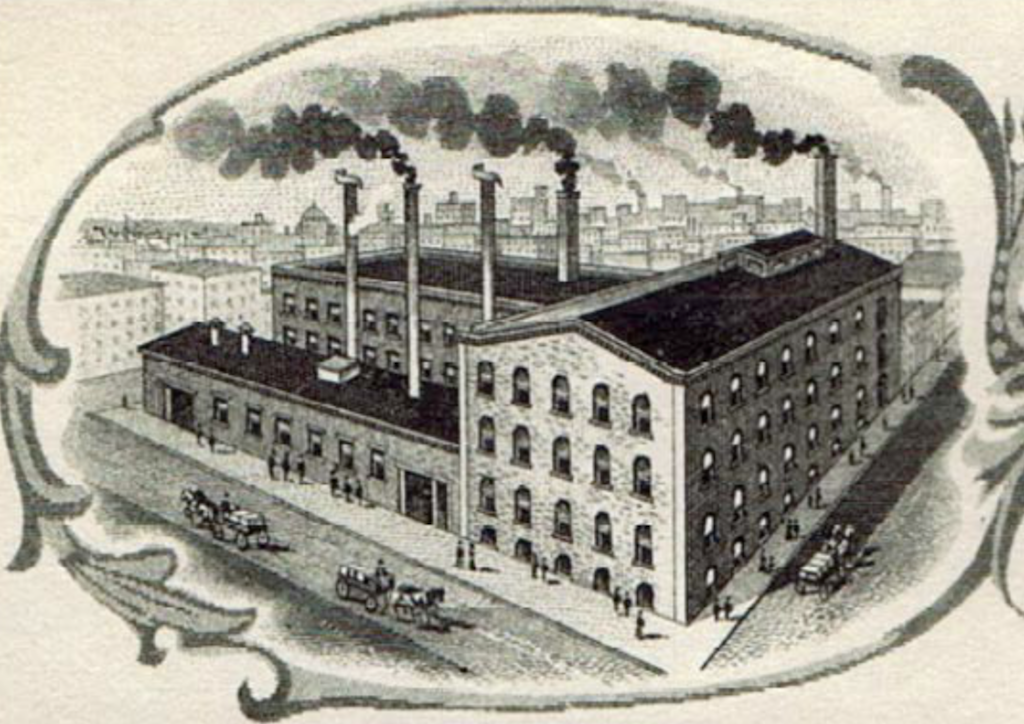
According to the historical nomination of the property, the manufacturer closed the decorating plant in 1914, and within a couple decades they abandoned their Philadelphia production entirely, decamping for Port Jervis, NY. In later years, it was used for storage by the Columbia Silk Dyeing Company, whose plant was located immediately north of these buildings. They didn’t take such great care of these buildings, and as we said earlier, the buildings don’t look so hot today.


Columbia Silk Dyeing Company has met the fate of so many industrial businesses once based in Kensington, and are no longer in operation. Fortunately for the principals of this business, they are in possession of some very valuable real estate, owning much of the west side of the 1700 block of N. Howard Street. Given the minimal connection between yarn production and real estate development, it’s no shock that they have entered into an agreement to sell their property to a developer who intends to build a sizable mixed-use development. But there are, as usual, some flies in the ointment.
Before we cover the complications, let’s show you what these developers are planning to do. They want to demolish everything on the site except the main decorating plant. Then they are planning to construct a new building to the north, with a couple retail spaces on Cecil B. Moore Avenue and 103 apartments in the six-story buildingh. The project also calls for 35 parking spots. Coscia Moos designed the building, and these renderings can give you a sense of what they’re thinking.
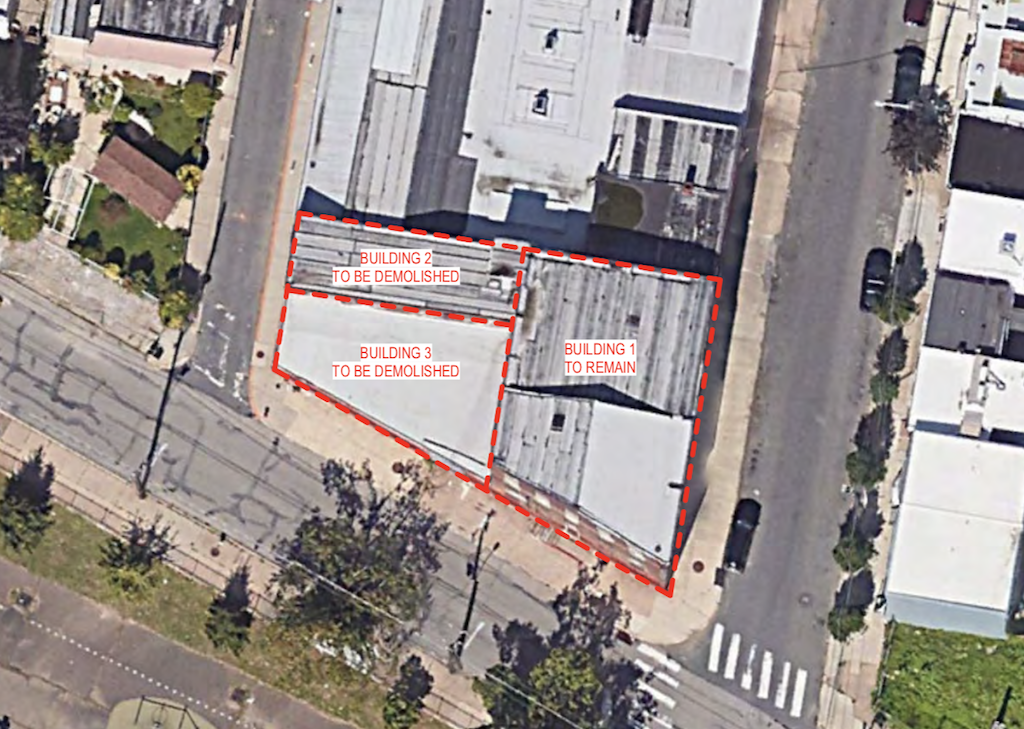
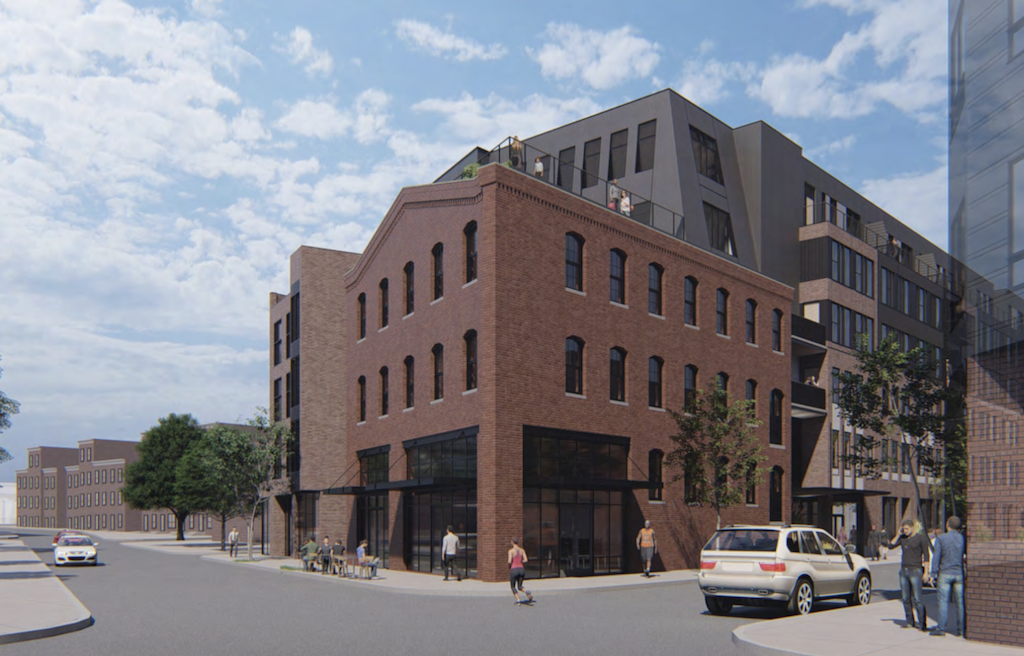
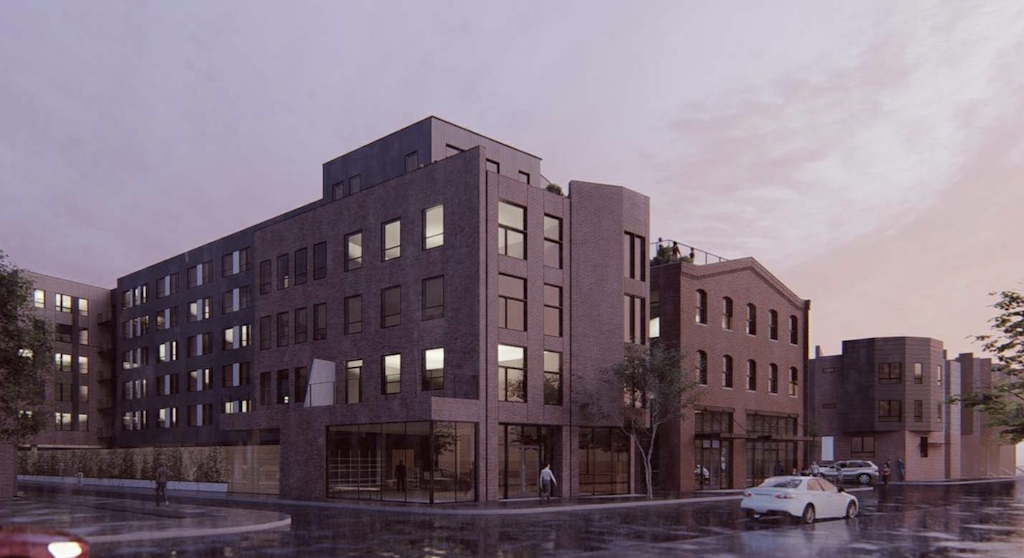
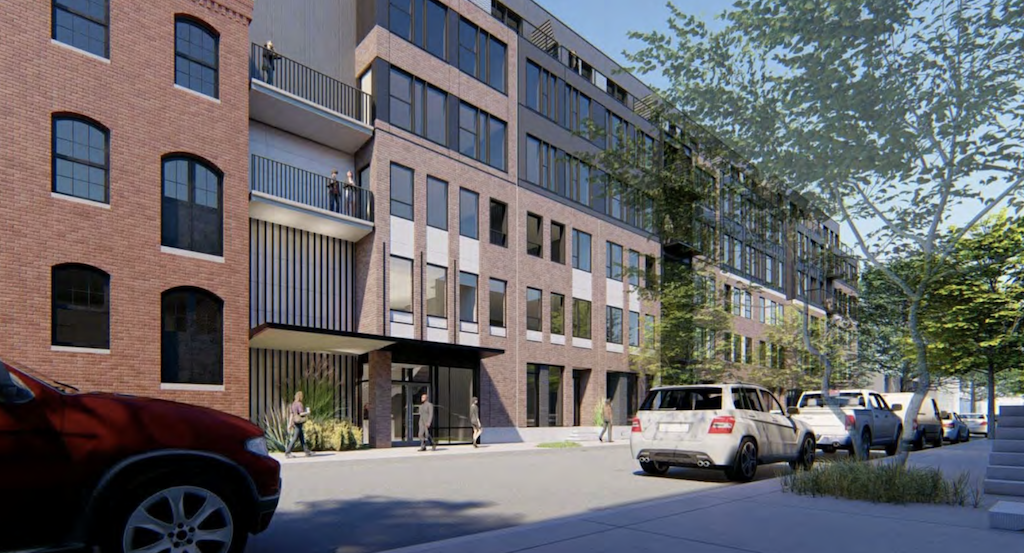
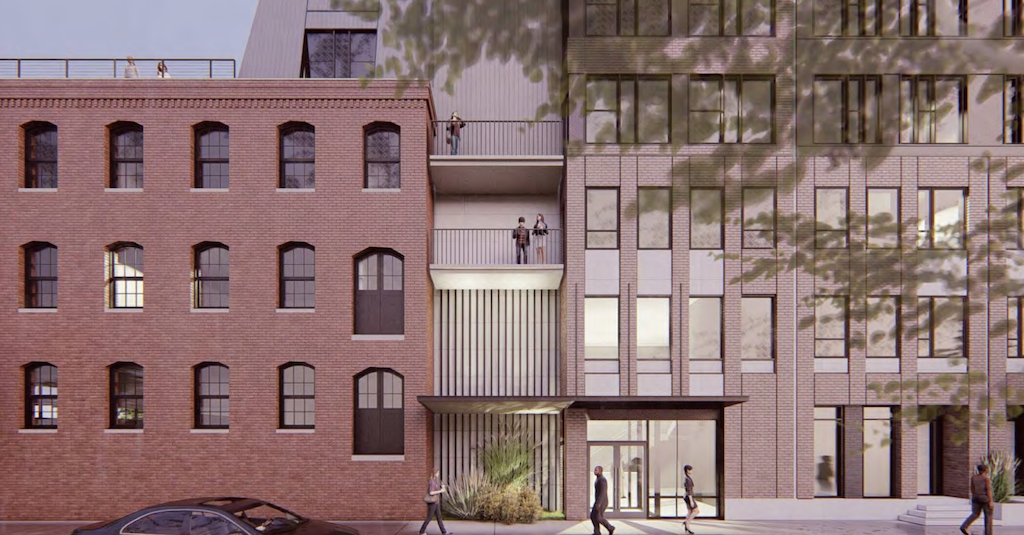
Complication number one is the fact that the Historical Commission deemed all the buildings of the former decorating plant either historic or contributing. This is problematic for the developers, who wish to modify the main building and demolish the other two. The Architectural Committee recommended denial of this plan, and the project will likely be heard next month by the full Historical Commission. We’re also not sure how the main building could be viably reused in a 2020 concept without undergoing some serious exterior changes, so we suspect that part of the plan won’t change, but perhaps the developers will try to preserve the stable building in an effort to meet the Commission halfway.
Of course, this won’t be the only issue for the developers. Assuming they get through Historic, they will still need a variance from the ZBA for this project. For whatever reason, this parcel is zoned for single family use, not mixed-use or even (as one might expect) industrial. As a result, they could only build maybe a dozen townhomes here, if they pursued a by-right development. This project will result in countless refusals, even though it’s obviously a higher and better use than single-family homes, given the size of the parcel and its proximity to mass transit and commercial corridors. Alas, it’ll be up to the developers to convince the community and the ZBA that this is right move for this property. Of course, that won’t come into play until the Historical Commission gives its blessing to some version of this project. It sounds like a big mess to us, let’s hope it doesn’t take years to get everything worked out.
